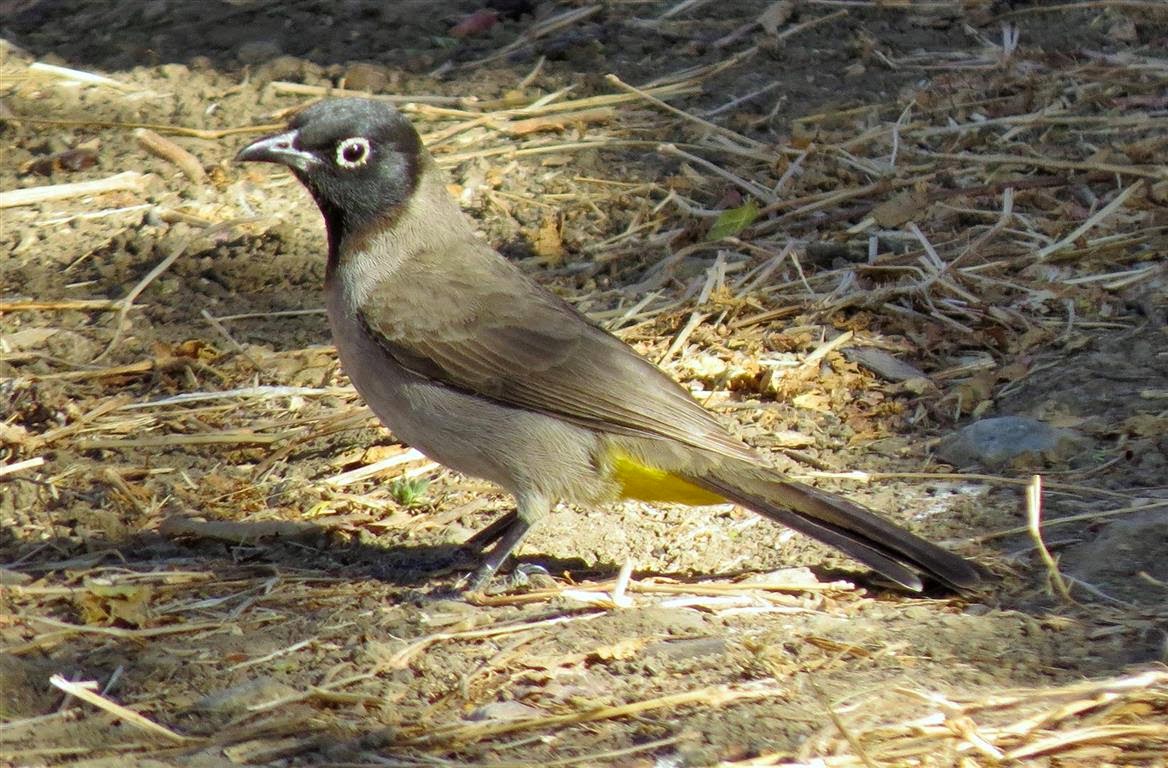I din't see any hint of the migration yet although I had to make a double take of a female black redstart at one moment just to make sure it wasn't a (migrating) common redstart.
Otherwise it was a similar mix of resident and wintering birds as last time but with subtle changes.
One subtle change was the easy with which I saw red-breasted flycatcher. There were two in the relatively small area I surveyed. Both were first winter birds.
red-breasted flycatcher
One of them was much more confiding than usual. They are often tricky to monitor because they don't return to the same perch like so many other flycatchers.
second view
Very soon after observing this flycatcher I arrived at a very recently deserted picnic spot. Indeed I saw the picnickers leave. They didn't leave the place very clean and so the birds moved in in waves.
Abyssinian white-eye
First in was a flock of Abyssinian white-eye which are fairly omnivorous. They were joined by an African paradise flycatcher.
African paradise flycatcher
Eastern Imperial Eagle
Almost out of nowhere around twenty fan-tailed raven appeared and started mobbing the eagle.
Fan-tailed raven
The mobbing moved off to another part of the valley and then presumably by co-incidence two more Eastern Imperial Eagle arrived near the original one. There was a lot of activity in the air between the eagles and the ravens.
Ruppell's weaver and Abyssinian white-eye
I wonder if the Ruppell's weaver about to eat into a green pepper got a shock when it did so?
white spectacled bulbul
The last species I saw join the picnic before I moved on was white spectacled bulbul.
fan-tailed raven
It and the other birds were overlooked by a single fan-tailed raven which hadn't joined in the mobbing choosing instead to explore the picnic.
blackstart
Early the scene had been much more peaceful except for the constant sounds of cinnamon-breasted bunting and blackstart.
Ruppell's weaver
Ruppell's weaver were still flocking. There is not much sign of spring breeding up here. Most breeding of this bird is in the Khareef season but some on the coast appear to also breed in early spring.
steppe buzzard
I started the blog noticing a subtle change. I will end with one. The number of steppe buzzard in the area has gently risen from one to four in the past six weeks. All of them have the grey-brown plumage of nominate common buzzard. What are the odds of that?













No comments:
Post a Comment